New Insights on Unique Features and Role of Nanostructured Materials in Cosmetics
Abstract
1. Introduction
2. Literature Review Approach—Inclusion/Exclusion Criteria
3. Nano-Systems Used in Cosmetics
3.1. Liposomes and Noisome in Cosmetics
3.2. Nanoemulsions in Cosmetics
3.3. Nanoparticles in Cosmetics
3.4. Nanotubes-Based Formulations in Cosmetics
3.5. Dendrimers in Cosmetics
3.6. Nanospheres in Cosmetics
4. Regulatory Perspectives of Nanomaterials in Cosmetics
5. Conclusions and Outlook
Author Contributions
Funding
Acknowledgments
Conflicts of Interest
References
- Cosmetics Products Market 2019 Global Industry Trends, Share, Size, Demand, Growth Opportunities, Industry Revenue, Future and Business Analysis by Forecast—2023. Available online: https://www.marketwatch.com/press-release/cosmetics-products-market-2019-global-industry-trends-share-size-demand-growth-opportunities-industry-revenue-future-and-business-analysis-by-forecast-2023-2019-07-11 (accessed on 7 April 2020).
- Aginsky Consulting Group Report (ACGR). Cosmetics Market Research Summary. 2007. Available online: http://www.aginskyconsulting.com/downloads/ACGIndustrySummaryReports2007/ACGRussian (accessed on 12 March 2020).
- McWilliams, A. Nanostructured Materials for the Biomedical, Pharmaceutical & Cosmetic Markets. BCC Research Bulletin. 2007. Available online: http://www.bccresearch.com/report/nanostructured-materialsmarkets-nan017d.html (accessed on 12 March 2020).
- Singh, P.; Nanda, A. Nanotechnology in cosmetics: A boon or bane? Toxicol. Environ. Chem. 2012, 94, 1467–1479. [Google Scholar] [CrossRef]
- Chiari-Andréo, B.G.; de Almeida-Cincotto, M.G.J.; Oshiro, J.A., Jr.; Taniguchi, C.Y.Y.; Chiavacci, L.A.; Isaac, V.L.B. Nanoparticles for Cosmetic Use and Its Application. In Nanoparticles in Pharmacotherapy; Grumezescu, A.M., Ed.; William Andrew: Norwich, NY, USA, 2019; pp. 113–146. [Google Scholar]
- Farris, P.K. Cosmeceuticals and Cosmetic Practice; John Wiley & Sons: Chichester, UK, 2013. [Google Scholar]
- Fox, C. Cosmetic and pharmaceutical vehicles: Skin care, hair care, makeup and sunscreens. Cosmet. Toilet. 1998, 113, 45–56. [Google Scholar]
- Ashtiani, H.R.A.; Bishe, P.; Lashgari, N.A.; Nilforoushzadeh, M.A.; Zare, S. Liposomes in cosmetics. J. Skin Stem Cell 2016, 3, e65815. [Google Scholar] [CrossRef]
- Sundari, P.T.; Anushree, H. Novel delivery systems: Current trend in cosmetic industry. Eur. J. Pharm. Med. Res. 2017, 4, 617–627. [Google Scholar]
- Arora, N.; Agarwal, S.; Murthy, R.S.R. Latest technology advances in cosmaceuticals. Int. J. Pharm. Sci. Drug Res. 2012, 4, 168–182. [Google Scholar]
- Hope, M.J.; Kitson, C.N. Liposomes: A perspective for dermatologists. Dermatol. Clin. 1993, 11, 143–154. [Google Scholar] [CrossRef]
- Kaul, S.; Gulati, N.; Verma, D.; Mukherjee, S.; Nagaich, U. Role of nanotechnology in cosmeceuticals: A review of recent advances. J. Pharm. 2018, 2018, 3420204. [Google Scholar] [CrossRef]
- Egbaria, K.; Weiner, N. Liposomes as a topical drug delivery system. Adv. Drug Deliv. Rev. 1990, 5, 287–300. [Google Scholar] [CrossRef]
- Ghyczy, M.; Nissen, H.P.; Biltz, H. The treatment of acne vulgaris by phosphatidylcholine from soybeans, with a high content of linoleic acid. J. Appl. Cosmetol. 1996, 14, 137–146. [Google Scholar]
- Rahimpour, Y.; Hamishehkar, H. Liposomes in cosmeceutics. Exp. Opin. Drug Deliv. 2012, 9, 443–455. [Google Scholar] [CrossRef]
- Giacomelli, L.; Moglia, A.; Losa, G.; Quaglino, P. Clinical use of Capilen, a liposomal cream based on fresh plant extracts enriched with omega fatty acids. Drugs Context 2020, 9, 2019-10. [Google Scholar] [CrossRef] [PubMed]
- Kazi, K.M.; Mandal, A.S.; Biswas, N.; Guha, A.; Chatterjee, S.; Behera, M.; Kuotsu, K. Niosome: A future of targeted drug delivery systems. J. Adv. Pharm. Technol. Res. 2010, 1, 374. [Google Scholar] [PubMed]
- Duarah, S.A.; Pujari, K.U.; Durai, R.D.; Narayanan, V.H. Nanotechnologybased cosmeceuticals: A review. Int. J. Appl. Pharm. 2016, 8, 8–12. [Google Scholar]
- Gandhi, A.; Sen, S.O.; Paul, A. Current trends in niosome as vesicular drug delivery system. Asian J. Pharm. Life Sci. 2012, 2, 339–353. [Google Scholar]
- Marianecci, C.; Di Marzio, L.; Rinaldi, F.; Celia, C.; Paolino, D.; Alhaique, F.; Carafa, M. Niosomes from 80s to present: The state of the art. Adv. Colloid Interface Sci. 2014, 205, 187–206. [Google Scholar] [CrossRef]
- Alomrani, A.H.; Al-Agamy, M.H.; Badran, M.M. In vitro skin penetration and antimycotic activity of itraconazole loaded niosomes: Various non-ionic surfactants. J. Drug Deliv. Sci. Technol. 2015, 28, 37–45. [Google Scholar] [CrossRef]
- Muzzalupo, R.; Pérez, L.; Pinazo, A.; Tavano, L. Pharmaceutical versatility of cationic niosomes derived from amino acid-based surfactants: Skin penetration behavior and controlled drug release. Int. J. Pharm. 2017, 529, 245–252. [Google Scholar] [CrossRef]
- Biswal, S.; Murthy, P.N.; Sahu, J.; Sahoo, P.; Amir, F. Vesicles of non-ionic surfactants (niosomes) and drug delivery potential. Int. J. Pharm. Sci. Nanotechnol. 2008, 1, 1–8. [Google Scholar]
- Sudheer, P.; Kaushik, K. Review on Niosomes-a Novel Approach for Drug Targeting. J. Pharm. Res. 2015, 14, 20–25. [Google Scholar] [CrossRef]
- Nasir, A.; Harikumar, S.L.; Amanpreet, K. Niosomes: An excellent tool for drug delivery. Int. J. Res. Pharm. Chem. 2012, 2, 479–487. [Google Scholar]
- Montenegro, L. Nanocarriers for skin delivery of cosmetic antioxidants. J. Pharm. Pharm. Res. 2014, 2, 73–92. [Google Scholar]
- Handjani-Vila, R.M.; Ribier, A.; Rondot, B.; Vanlerberghie, G. Dispersions of lamellar phases of non-ionic lipids in cosmetic products. Int. J. Cosmet. Sci. 1979, 1, 303–314. [Google Scholar] [CrossRef] [PubMed]
- Solans, C.; Izquierdo, P.; Nolla, J.; Azemar, N.; Garcia-Celma, M.J. Nano-emulsions. Curr. Opin. Colloid Interface Sci. 2005, 10, 102–110. [Google Scholar] [CrossRef]
- Hidajat, M.J.; Jo, W.; Kim, H.; Noh, J. Effective Droplet Size Reduction and Excellent Stability of Limonene Nanoemulsion Formed by High-Pressure Homogenizer. Colloids Interfaces 2020, 4, 5. [Google Scholar] [CrossRef]
- Shah, P.; Bhalodia, D.; Shelat, P. Nanoemulsion: A pharmaceutical review. Syst. Rev. Pharm. 2010, 1, 24–32. [Google Scholar] [CrossRef]
- Patel, R.P.; Joshi, J.R. An overview on nanoemulsion: A novel approach. Int. J. Pharm. Sci. Res. 2012, 3, 4640. [Google Scholar]
- Özgün, S. Nanoemulsions in cosmetics. Anadolu. Univ. 2013, 1, 3–11. [Google Scholar]
- Chevalier, Y.; Bolzinger, M.A. Micelles and Nanoemulsions. In Nanocosmetics; Springer: Cham, Switzerland, 2019; pp. 47–72. [Google Scholar]
- Comini, M.; Lenzini, M.; Guglielmini, G. Nanoemulsions Comprising Lipoaminoacids and Monoglycerides, Diglycerides and Polyglycerides of Fatty Acids. Patent MI2005A000218, 24 August 2006. [Google Scholar]
- Nanocream®. Available online: https://www.sinerga.it/files/materie-prime/nanocream/nanocream-flyer.pdf (accessed on 7 April 2020).
- Mihranyan, A.; Ferraz, N.; Strømme, M. Current status and future prospects of nanotechnology in cosmetics. Prog. Mater. Sci. 2012, 57, 875–910. [Google Scholar] [CrossRef]
- Burda, C.; Chen, X.; Narayanan, R.; El-Sayed, M.A. Chemistry and properties of nanocrystals of different shapes. Chem. Rev. 2005, 105, 1025–1102. [Google Scholar] [CrossRef]
- Albanese, A.; Tang, P.S.; Chan, W.C.W. The effect of nanoparticle size, shape, and surface chemistry on biological systems. Ann. Rev. Biomed. Eng. 2012, 14, 1–16. [Google Scholar] [CrossRef]
- Dransfield, G.P. Inorganic sunscreens. Radiat Prot Dosim. 2000, 91, 271–273. [Google Scholar] [CrossRef]
- Yabe, S.; Sato, T. Cerium oxide for sunscreen cosmetics. J. Solid State Chem. 2003, 171, 7–11. [Google Scholar] [CrossRef]
- Herrling, T.; Seifert, M.; Jung, K. Cerium dioxide: Future UV-filter in sunscreen? SOFW J. 2013, 139, 10–14. [Google Scholar]
- Truffault, L.; Winton, B.; Choquenet, B.; Andreazza, C.; Simmonard, C.; Devers, T.; Konstantinov, K.; Couteau, C.; Coiffard, L.J.M. Cerium oxide based particles as possible alternative to ZnO in sunscreens: Effect of the synthesis method on the photoprotection results. Mater. Lett. 2012, 68, 357–360. [Google Scholar] [CrossRef]
- Wu, W.; Fan, Y.; Wu, X.; Liao, S.; Huang, X.; Li, X. Preparation of nano-sized cerium and titanium pyrophosphates via solid-state reaction at room temperature. Rare Met. 2009, 28, 33–38. [Google Scholar] [CrossRef]
- De Lima, J.F.; Serra, O.A. Cerium phosphate nanoparticles with low photocatalytic activity for UV light absorption application in photoprotection. Dyes Pigm. 2013, 97, 291–296. [Google Scholar] [CrossRef]
- Choy, J.-H.; Choi, S.-J.; Oh, J.-M.; Park, T. Clay minerals and layered double hydroxides for novel biological applications. Appl. Clay Sci. 2007, 36, 122–132. [Google Scholar] [CrossRef]
- Bolzinger, M.A.; Briançon, S.; Chevalier, Y. Nanoparticles through the skin: Managing conflicting results of inorganic and organic particles in cosmetics and pharmaceutics. Wiley Interdisc. Rev. Nanomed. Nanobiotechnol. 2011, 3, 463–478. [Google Scholar] [CrossRef]
- Cécile, B.; Sonia, A.; Frédéric, G. Silica- and perfluoro-based nanoparticular polymeric network for the skin protection against organophosphates. Mater. Res. Express 2016, 3, 065019. [Google Scholar]
- Khan, A.K.; Rashid, R.; Murtaza, G.; Zahra, A. Gold nanoparticles: Synthesis and applications in drug delivery. Trop. J. Pharm. Res. 2014, 13, 1169–1177. [Google Scholar] [CrossRef]
- Haddada, M.B.; Gerometta, E.; Chawech, R.; Sorres, J.; Bialecki, A.; Pesnel, S.; Morel, A.L. Assessment of antioxidant and dermoprotective activities of gold nanoparticles as safe cosmetic ingredient. Colloids Surf. B Biointerfaces 2020, 189, 110855. [Google Scholar] [CrossRef] [PubMed]
- Yeh, Y.C.; Creran, B.; Rotello, V.M. Gold nanoparticles: Preparation, properties, and applications in bionanotechnology. Nanoscale 2012, 4, 1871–1880. [Google Scholar] [CrossRef] [PubMed]
- Thakor, A.S.; Jokerst, J.; Zavaleta, C.; Massoud, T.F.; Gambhir, S.S. Gold nanoparticles: A revival in precious metal administration to patients. Nano Lett. 2011, 11, 4029–4036. [Google Scholar] [CrossRef] [PubMed]
- Pardeike, J.; Hommoss, A.; Müller, R.H. Lipid nanoparticles (SLN, NLC) in cosmetic and pharmaceutical dermal products. Int. J. Pharm. 2009, 366, 170–184. [Google Scholar] [CrossRef]
- Müller, R.H.; Radtke, M.; Wissing, S.A. Solid lipid nanoparticles (SLN) and nanostructured lipid carriers (NLC) in cosmetic and dermatological preparations. Adv. Drug Deliv. Rev. 2002, 54, S131–S155. [Google Scholar] [CrossRef]
- Behzadi, S.; Serpooshan, V.; Tao, W.; Hamaly, M.A.; Alkawareek, M.Y.; Dreaden, E.C.; Mahmoudi, M. Cellular uptake of nanoparticles: Journey inside the cell. Chem. Soc. Rev. 2017, 46, 4218–4244. [Google Scholar] [CrossRef]
- Distasi, C.; Ruffinatti, F.A.; Dionisi, M.; Antoniotti, S.; Gilardino, A.; Croci, G.; Incarnato, D. SiO2 nanoparticles modulate the electrical activity of neuroendocrine cells without exerting genomic effects. Sci. Rep. 2018, 8, 1–12. [Google Scholar] [CrossRef]
- Kaushik, B.K.; Majumder, M.K. Carbon Nanotube: Properties and Applications. In Carbon Nanotube-Based VLSI Interconnects; Springer: New Delhi, India, 2015; pp. 17–37. [Google Scholar]
- Hirlekar, R.; Yamagar, M.; Garse, H.; Vij, M.; Kadam, V. Carbon nanotubes and its applications: A review. Asian J. Pharm. Clin. Res. 2009, 2, 17–27. [Google Scholar]
- Huang, X.; Kobos, R.; Xu, G. Hair Coloring and Cosmetic Compositions Comprising Carbon Nanotubes. U.S. Patent 7,276,088B2, 2 October 2007. [Google Scholar]
- Huang, X.; Kobos, R.; Xu, G. Peptide-Based Carbon Nanotube Hair Colorants and Their Use in Hair Colorant and Cosmetic Compositions. U.S. Patent 20050229335A1, 18 November 2005. [Google Scholar]
- Deen, I.; Pang, X.; Zhitomirsky, I. Electrophoretic deposition of composite chitosan–halloysite nanotube–hydroxyapatite films. Colloids Surf. Physicochem. Eng. Asp. 2012, 410, 38–44. [Google Scholar] [CrossRef]
- Panchal, A.; Fakhrullina, G.; Fakhrullin, R.; Lvov, Y. Self-assembly of clay nanotubes on hair surface for medical and cosmetic formulations. Nanoscale 2018, 10, 18205–18216. [Google Scholar] [CrossRef]
- Liu, M.; Fakhrullin, R.; Novikov, A.; Panchal, A.; Lvov, Y. Tubule nanoclay-organic heterostructures for biomedical applications. Macromol. Biosci. 2019, 19, 1800419. [Google Scholar] [CrossRef] [PubMed]
- Chauhan, A.; Patil, C.; Jain, P.; Kulhari, H. Dendrimer-Based Marketed Formulations and Miscellaneous Applications in Cosmetics, Veterinary, and Agriculture. In Pharmaceutical Applications of Dendrimers; Elsevier: Amsterdam, The Netherlands, 2020; pp. 325–334. [Google Scholar]
- Klajnert, B.; Bryszewska, M. Dendrimers: Properties and applications. Acta Biochim. Pol. 2001, 48, 199–208. [Google Scholar] [CrossRef] [PubMed]
- Yapar, E.A.; Inal, O. Nanomaterials and cosmetics. J. Pharm. Istanbul Univ. 2012, 42, 43–70. [Google Scholar]
- Ahmad, U.; Ahmad, Z.; Khan, A.A.; Akhtar, J.; Singh, S.P.; Ahmad, F.J. Strategies in development and delivery of nanotechnology based cosmetic products. Drug Res. 2018, 68, 545–552. [Google Scholar] [CrossRef]
- Chauhan, A.S.; Sridevi, S.; Chalasani, K.B.; Jain, A.K.; Jain, S.K.; Jain, N.K.; Diwan, P.V. Dendrimer-mediated transdermal delivery: Enhanced bioavailability of indomethacin. J. Control. Release 2003, 90, 335–343. [Google Scholar] [CrossRef]
- Holmes, A.M.; Scurr, D.J.; Heylings, J.R.; Wan, K.W.; Moss, G.P. Dendrimer pre-treatment enhances the skin permeation of chlorhexidine digluconate: Characterisation by in vitro percutaneous absorption studies and time-of-flight secondary ion mass spectrometry. Eur. J. Pharm. Sci. 2017, 104, 90–101. [Google Scholar] [CrossRef]
- Ammala, A. Biodegradable polymers as encapsulation materials for cosmetics and personal care markets. Int. J. Cosmet. Sci. 2013, 35, 113–124. [Google Scholar] [CrossRef]
- Mourey, T.H.; Turner, S.R.; Rubinstein, M.; Fréchet, J.M.J.; Hawker, C.J.; Wooley, K.L. Unique behavior of dendritic macromolecules: Intrinsic viscosity of polyether dendrimers. Macromolecules 1992, 25, 2401–2406. [Google Scholar] [CrossRef]
- Singh, T.G.; Sharma, N. Nanobiomaterials in Cosmetics: Current Status and Future Prospects. In Nanobiomaterials in Galenic Formulations and Cosmetics; William Andrew: Norwich, NY, USA, 2016; pp. 149–174. [Google Scholar]
- Lohani, A.; Verma, A.; Joshi, H.; Yadav, N.; Karki, N. Nanotechnology-based cosmeceuticals. ISRN Dermatol. 2014, 2014, 843687. [Google Scholar] [CrossRef]
- Guterres, S.S.; Alves, M.P.; Pohlmann, A.R. Polymeric nanoparticles, nanospheres, and nanocapsules, for cutaneous applications. Drug Target Insights 2007, 2, 147–157. [Google Scholar] [CrossRef]
- Ito, F.; Takahashi, T.; Kanamura, K.; Kawakami, H. Possibility for the development of cosmetics with PLGA nanospheres. Drug Dev. Ind. Pharm. 2013, 39, 752–761. [Google Scholar] [CrossRef] [PubMed]
- Katz, L.M.; Dewan, K.; Bronaugh, R.L. Nanotechnology in cosmetics. Food Chem. Toxicol. 2015, 85, 127–137. [Google Scholar] [CrossRef] [PubMed]
- Food and Drug Administration. Guidance for Industry Safety of Nanomaterials in Cosmetic Products; Center for Food Safety and Applied Nutrition, US Department of Health and Human Services: Rockville, MD, USA, 2014. Available online: http://www.fda.gov/downloads/Cosmetics/GuidanceRegulation/GuidanceDocuments/UCM (accessed on 7 April 2020).
- Henkler, F.; Tralau, T.; Tentschert, J.; Kneuer, C.; Haase, A.; Platzek, T.; Götz, M.E. Risk assessment of nanomaterials in cosmetics: A European union perspective. Arch. Toxicol. 2012, 86, 1641–1646. [Google Scholar] [CrossRef] [PubMed]
- Bilal, M.; Iqbal, H.M. An insight into toxicity and human-health-related adverse consequences of cosmeceuticals—A review. Sci. Total Environ. 2019, 670, 555–568. [Google Scholar] [CrossRef]
- Subramaniam, V.D.; Prasad, S.V.; Banerjee, A.; Gopinath, M.; Murugesan, R.; Marotta, F.; Pathak, S. Health hazards of nanoparticles: Understanding the toxicity mechanism of nanosized ZnO in cosmetic products. Drug Chem. Toxicol. 2019, 42, 84–93. [Google Scholar] [CrossRef]
- Bilal, M.; Mehmood, S.; Iqbal, H. The Beast of Beauty: Environmental and Health Concerns of Toxic Components in Cosmetics. Cosmetics 2020, 7, 13. [Google Scholar] [CrossRef]
- Rajput, V.; Minkina, T.; Sushkova, S.; Behal, A.; Maksimov, A.; Blicharska, E.; Barsova, N. ZnO and CuO nanoparticles: A threat to soil organisms, plants, and human health. Environ. Geochem. Health 2020, 42, 147–158. [Google Scholar] [CrossRef]
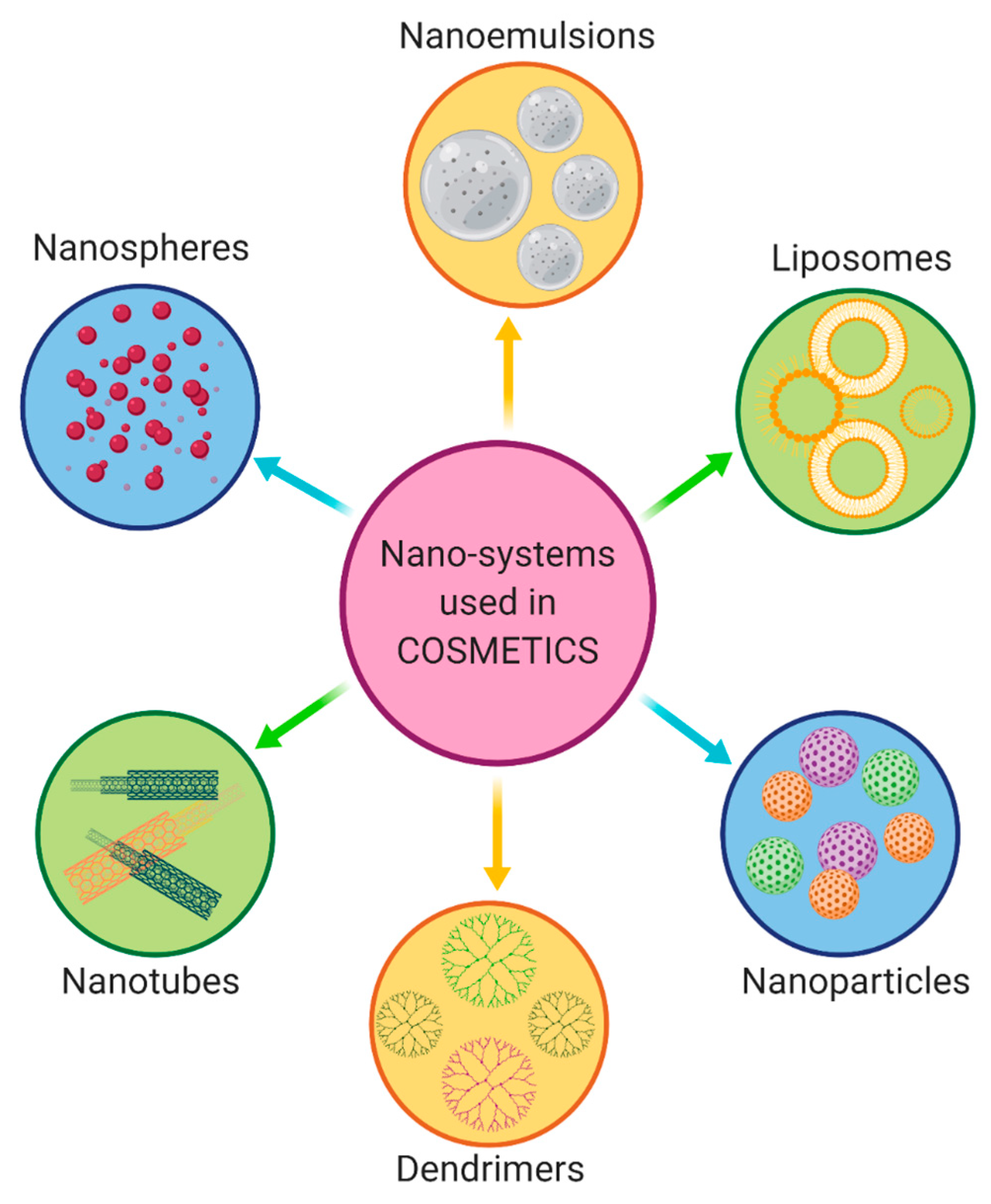
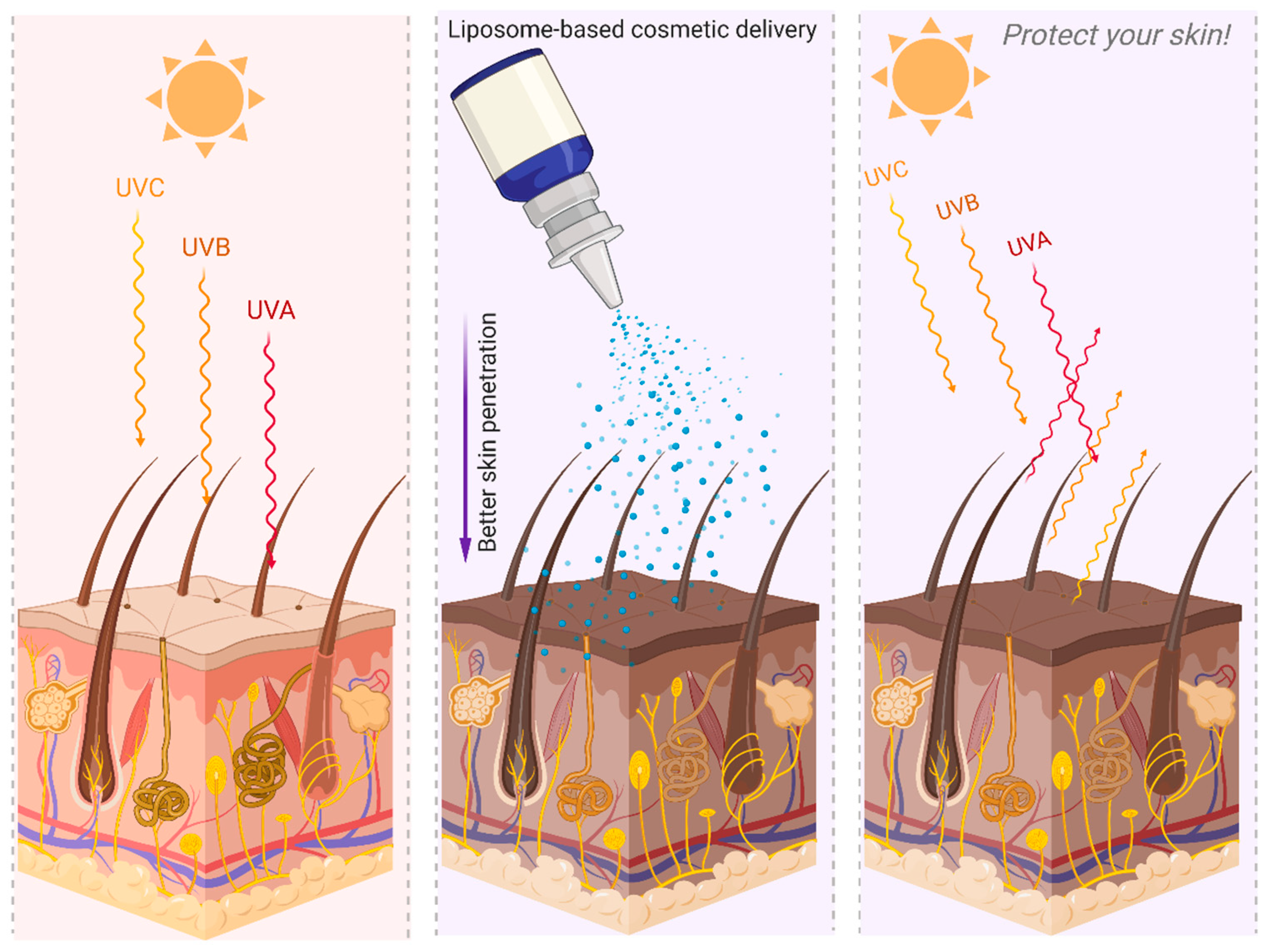
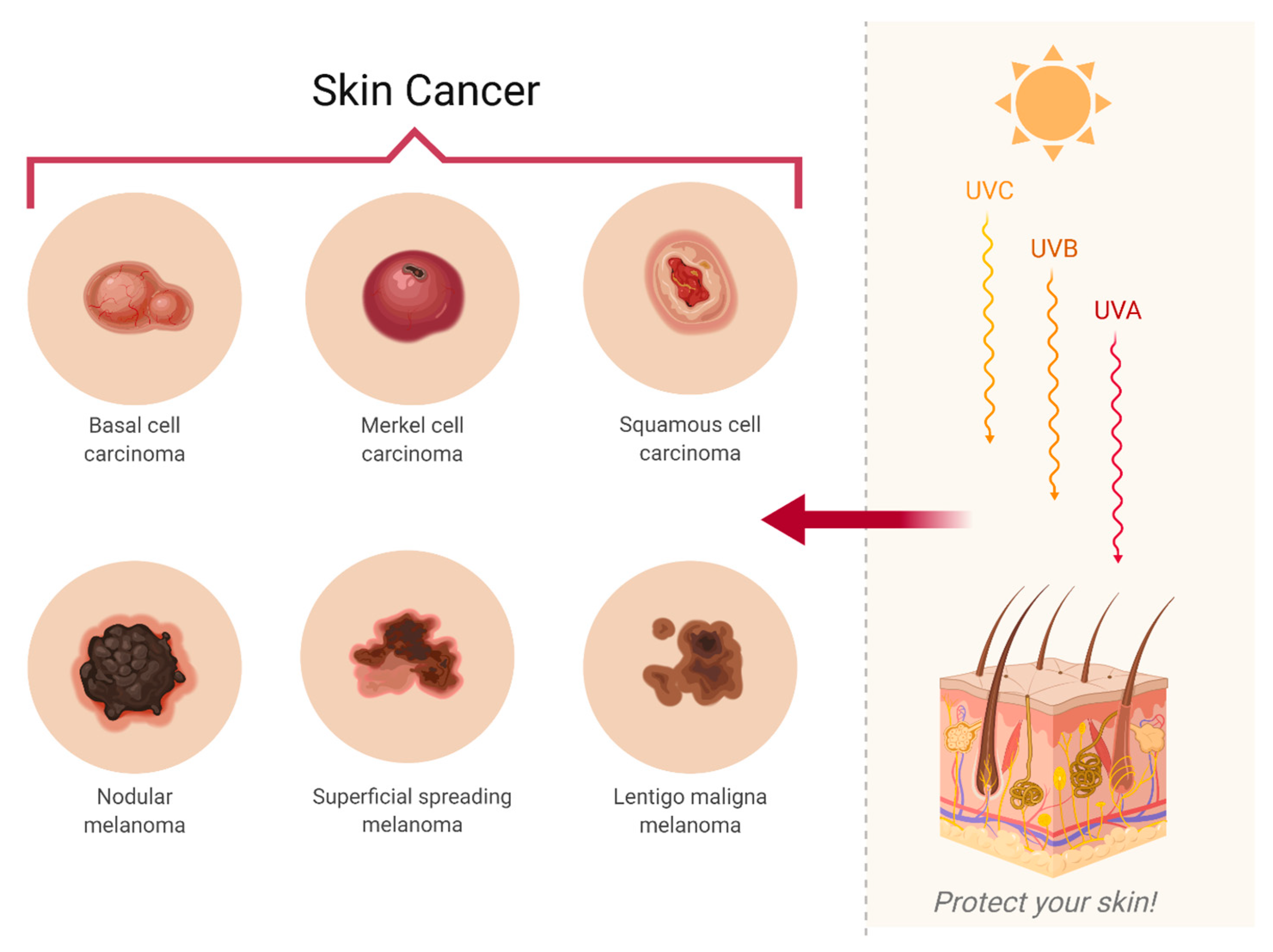
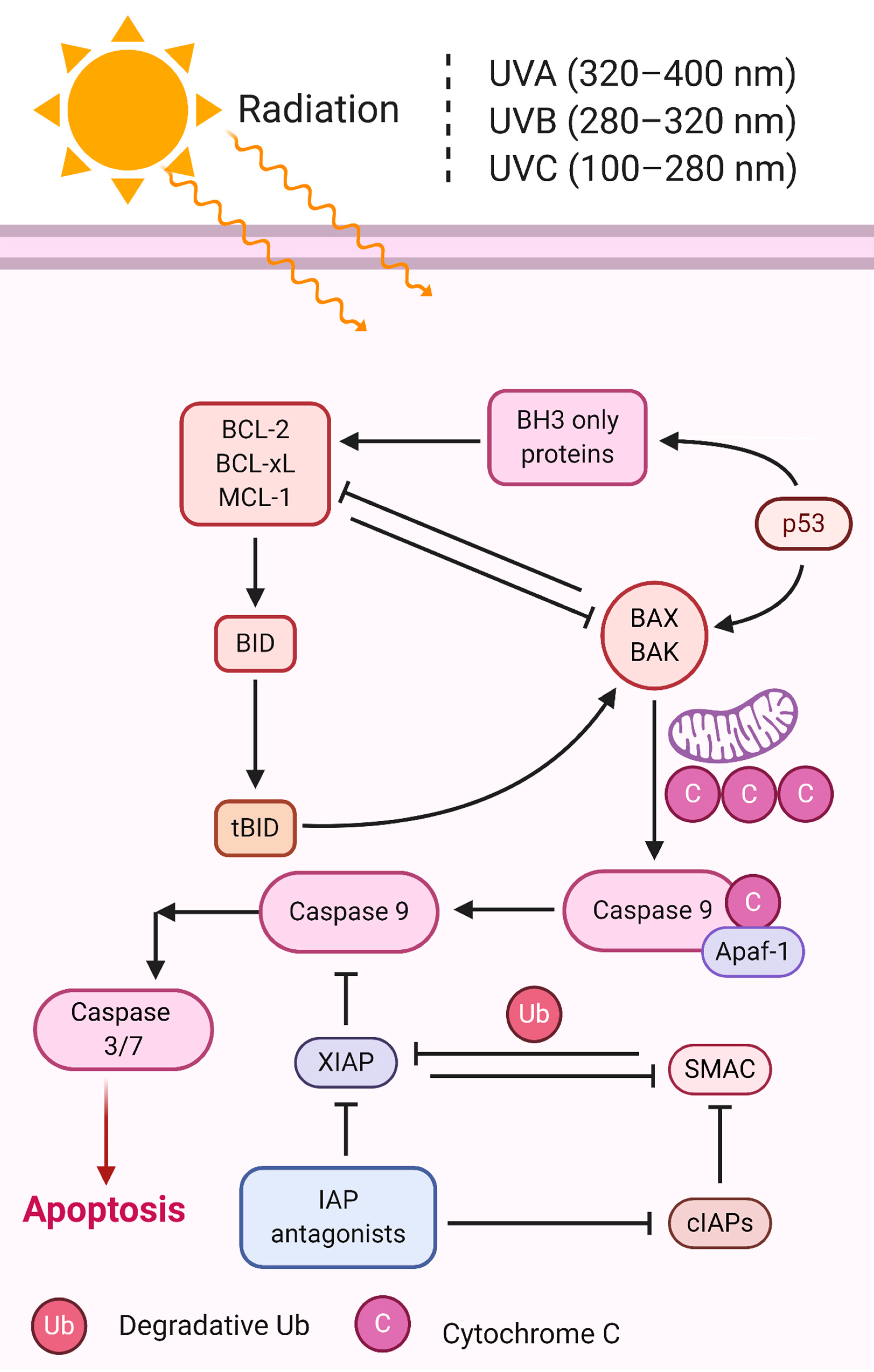
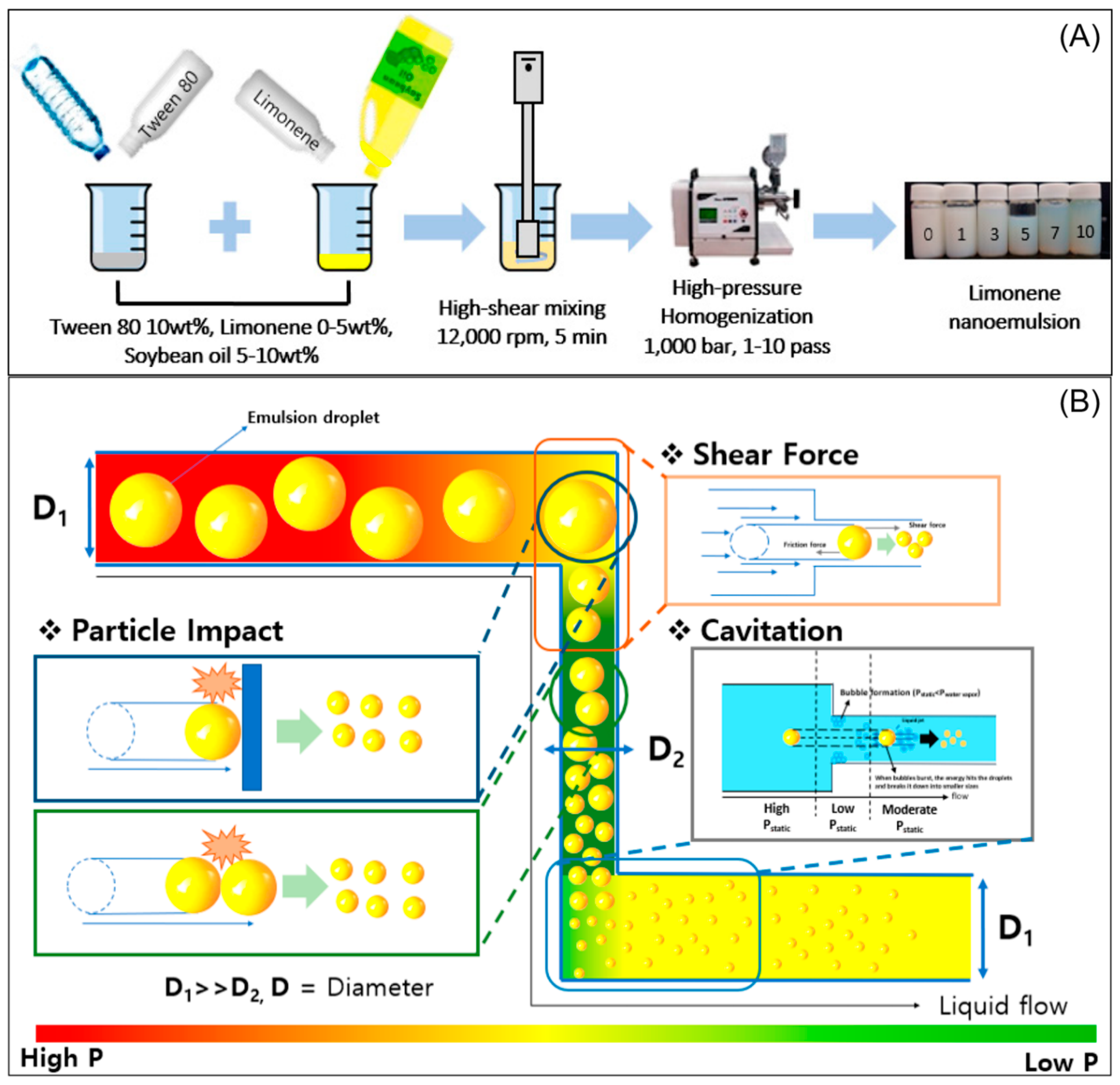
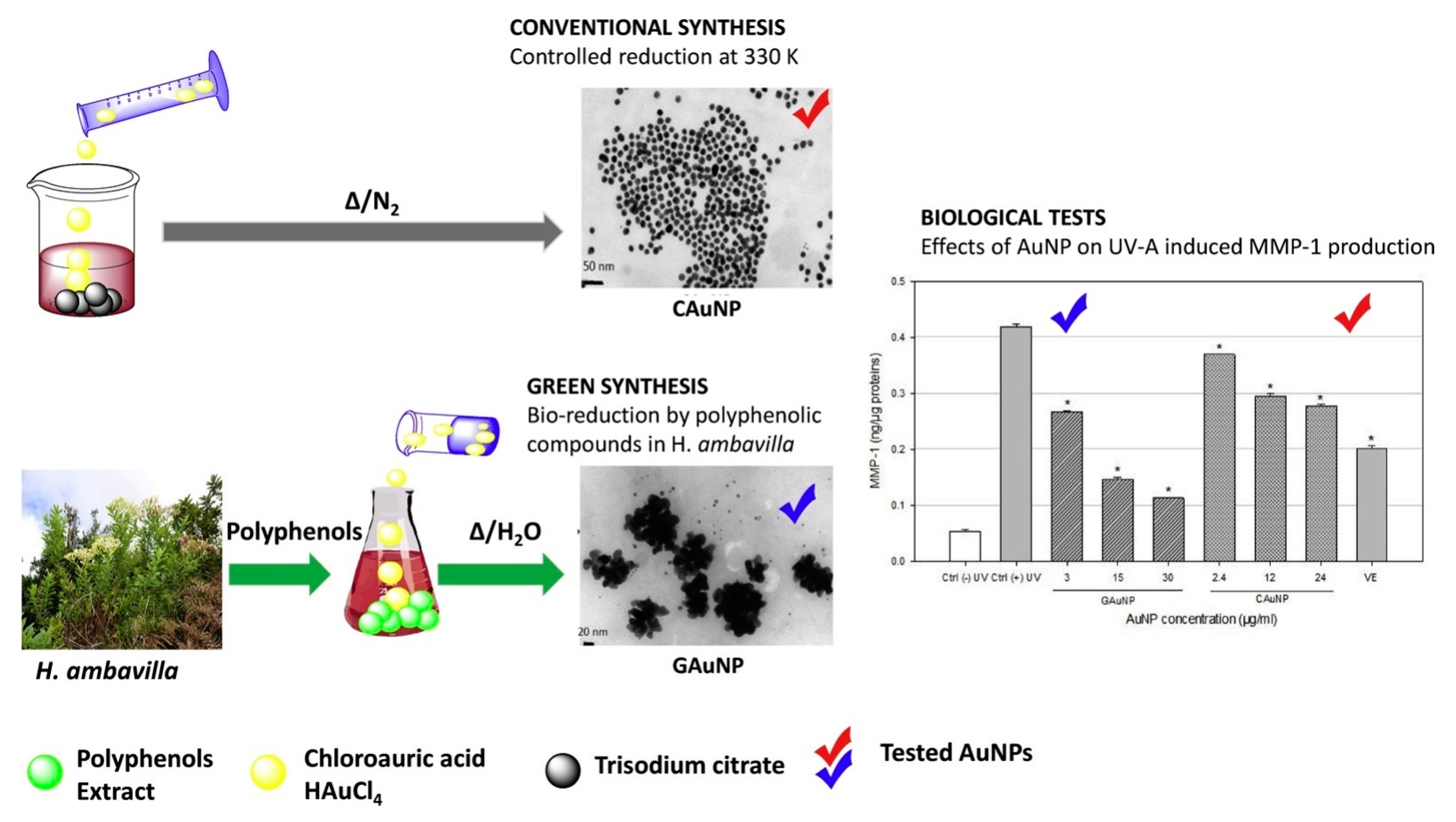

| Search Terms | Document Types | # of Articles from All Years | # of Articles from Top Journals | # of Articles Based on Territory | |||
|---|---|---|---|---|---|---|---|
| Nanostructured materials in cosmetics | Article, Review, Book Chapter, Conference Paper, Book | 2020 | 9 | Journal of Nanoparticle Research | 6 | United States | 67 |
| 2019 | 18 | Environmental Science and Technology | 5 | Italy | 32 | ||
| 2018 | 24 | Langmuir | 5 | Germany | 27 | ||
| 2017 | 26 | Nanobiomaterials In Galenic Formulations and Cosmetics Applications of Nanobiomaterials | 5 | India | 25 | ||
| 2016 | 36 | Colloids and Surfaces B Biointerfaces | 4 | China | 23 | ||
| All past years | 192 | All other Journals | 280 | Other countries | 131 | ||
| liposomes in cosmetics | Article, Review, Book Chapter, Conference Paper, Short Survey | 2020 | 5 | International Journal of Pharmaceutics | 12 | United States | 52 |
| 2019 | 30 | Journal of Cosmetic Science | 10 | India | 49 | ||
| 2018 | 35 | International Journal of Cosmetic Science | 9 | Germany | 38 | ||
| 2017 | 30 | Colloids and Surfaces B Biointerfaces | 7 | France | 27 | ||
| 2016 | 38 | European Journal of Lipid Science and Technology | 7 | Italy | 27 | ||
| All past years | 289 | All other Journals | 382 | Other countries | 234 | ||
| nanoemulsions in cosmetics | Article, Review, Conference Paper, Book Chapter, Book | 2020 | 12 | International Journal of Pharmaceutics | 9 | India | 48 |
| 2019 | 42 | International Journal of Cosmetic Science | 8 | Brazil | 39 | ||
| 2018 | 42 | Colloids and Surfaces A Physicochemical and Engineering Aspects | 7 | United States | 37 | ||
| 2017 | 26 | Colloids and Surfaces B Biointerfaces | 6 | Italy | 22 | ||
| 2016 | 36 | Journal of Applied Cosmetology | 6 | China | 21 | ||
| All past years | 146 | All other Journals | 268 | Other countries | 137 | ||
| nanoparticles in cosmetics | Article, Review, Book Chapter, Conference Paper, Short Survey | 2020 | 72 | International Journal of Pharmaceutics | 39 | United States | 318 |
| 2019 | 238 | International Journal of Cosmetic Science | 28 | India | 312 | ||
| 2018 | 255 | International Journal of Nanomedicine | 25 | China | 266 | ||
| 2017 | 236 | Colloids and Surfaces B Biointerfaces | 23 | Germany | 183 | ||
| 2016 | 248 | Nanotoxicology | 22 | Italy | 147 | ||
| All past years | 1238 | All other Journals | 2150 | Other countries | 1061 | ||
| nanotubes in cosmetics | Article, Review, Book Chapter | 2020 | 3 | Journal of Nanoscience and Nanotechnology | 4 | United States | 37 |
| 2019 | 16 | Advanced Materials Research | 3 | India | 29 | ||
| 2018 | 19 | Proceedings of SPIE The International Society for Optical Engineering | 3 | China | 23 | ||
| 2017 | 14 | Scientific Reports | 3 | Brazil | 8 | ||
| 2016 | 21 | Analytical Letters | 2 | South Korea | 8 | ||
| All past years | 110 | All other Journals | 168 | Other countries | 78 | ||
| Search Terms | Total Articles | # of Articles Published in the Last Five Years Filtered with Best Match Term on | |||||
|---|---|---|---|---|---|---|---|
| 2020 | 2019 | 2018 | 2017 | 2016 | All Past Years | ||
| nanostructured materials in cosmetics | 11,319 | 63 | 850 | 1022 | 967 | 1009 | 7408 |
| liposomes in cosmetics | 441 | 5 | 39 | 28 | 28 | 27 | 314 |
| nanoemulsions in cosmetics | 145 | 4 | 25 | 23 | 12 | 13 | 68 |
| nanoparticles in cosmetics | 8738 | 88 | 761 | 862 | 824 | 819 | 5384 |
| nanotubes in cosmetics | 1896 | 6 | 107 | 157 | 124 | 162 | 1370 |
© 2020 by the authors. Licensee MDPI, Basel, Switzerland. This article is an open access article distributed under the terms and conditions of the Creative Commons Attribution (CC BY) license (http://creativecommons.org/licenses/by/4.0/).
Share and Cite
Bilal, M.; Iqbal, H.M.N. New Insights on Unique Features and Role of Nanostructured Materials in Cosmetics. Cosmetics 2020, 7, 24. https://doi.org/10.3390/cosmetics7020024
Bilal M, Iqbal HMN. New Insights on Unique Features and Role of Nanostructured Materials in Cosmetics. Cosmetics. 2020; 7(2):24. https://doi.org/10.3390/cosmetics7020024
Chicago/Turabian StyleBilal, Muhammad, and Hafiz M. N. Iqbal. 2020. "New Insights on Unique Features and Role of Nanostructured Materials in Cosmetics" Cosmetics 7, no. 2: 24. https://doi.org/10.3390/cosmetics7020024
APA StyleBilal, M., & Iqbal, H. M. N. (2020). New Insights on Unique Features and Role of Nanostructured Materials in Cosmetics. Cosmetics, 7(2), 24. https://doi.org/10.3390/cosmetics7020024






